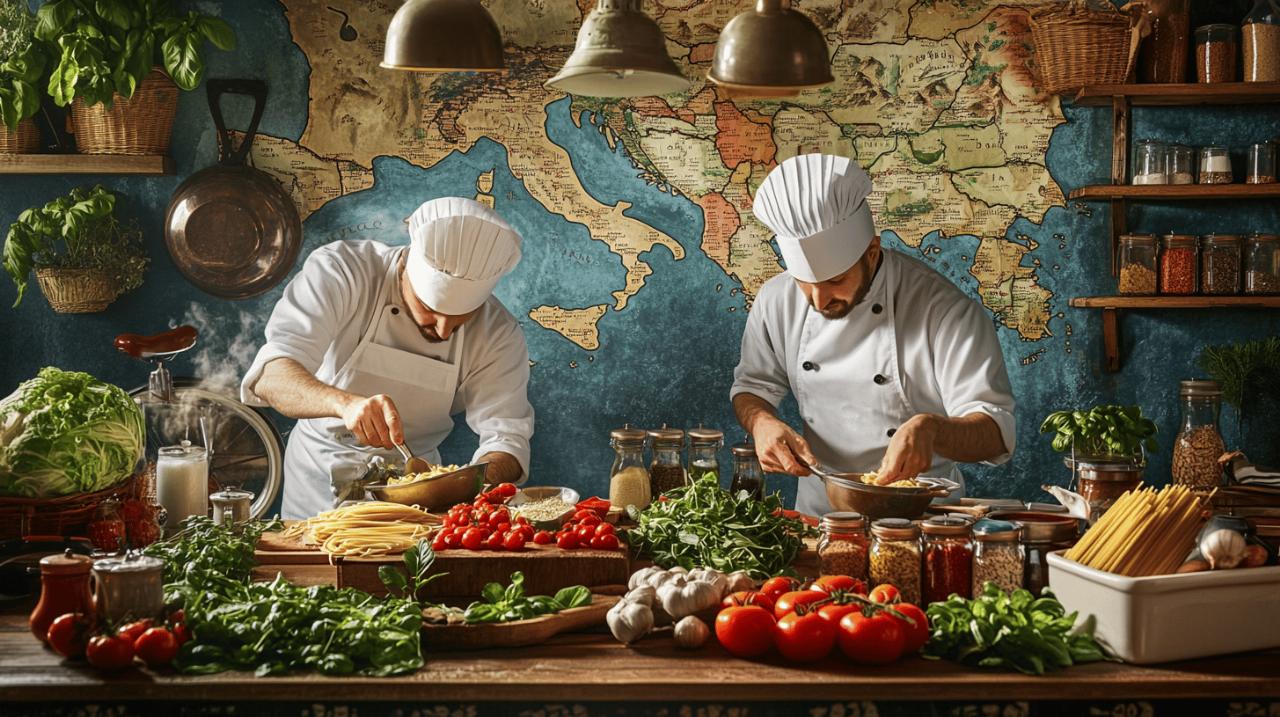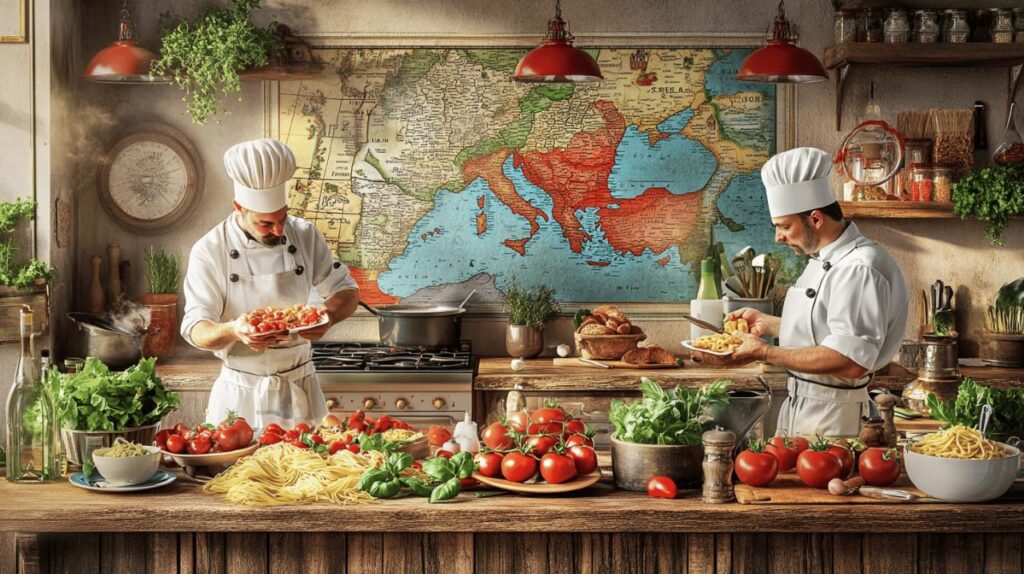Italy beckons travellers with its stunning landscapes, rich history, and world-renowned cuisine. Whether you're dreaming of hiking through the majestic Dolomites or savouring authentic risotto by Lake Garda, Italy offers a sensory journey unlike any other. Planning your Italian adventure requires thoughtful consideration, especially when seeking genuine culinary experiences away from tourist traps. Let's explore how to discover the heart of Italian cuisine while navigating this beautiful country like a seasoned traveller.
Exploring italy's regional culinary treasures
Italian cuisine varies dramatically from north to south, with each region proudly preserving its culinary heritage. Ameropa Viaggi, a trusted travel resource with extensive coverage of European destinations, emphasises that authentic Italian dining experiences extend far beyond the familiar pizza and pasta that most tourists seek. Understanding these regional differences can transform your Italian holiday from ordinary to extraordinary, allowing you to experience flavours that have been perfected over centuries.
Northern italian specialities beyond pizza and pasta
Northern Italian cuisine reflects the cooler climate and proximity to Alpine neighbours Austria and Switzerland. In the Dolomites, hearty mountain fare dominates menus with rich polenta dishes often served with game meats and mushrooms. Sweet finishes include delicious apple strudel, showcasing the Austrian influence on this region. Moving toward Lake Garda, culinary traditions shift to embrace the bounty of freshwater lakes. Here, specialities include trinca risotto and flavourful fish soup prepared with the day's catch. The northern regions also boast exceptional rice dishes rather than pasta, with creamy risottos featuring seasonal ingredients taking centre stage in cities like Milan.
When dining in Northern Italy, adjust to local customs by planning lunch between 1 PM and 2:30 PM and dinner after 8:30 PM. Authentic restaurants in this region often display limited, handwritten menus featuring seasonal specialities—a promising sign of freshly prepared food rather than tourist-oriented fare. Walking holidays in areas like Lake Iseo, starting from £719 per person, offer the perfect opportunity to work up an appetite while exploring the stunning northern landscapes.
Southern italian delicacies: mediterranean flavours and traditional cooking methods
Southern Italian cuisine embraces the Mediterranean climate with bright, vibrant flavours and simple cooking methods that allow quality ingredients to shine. Olive oil replaces the butter commonly used in northern dishes, while tomatoes, eggplants, peppers, and citrus fruits feature prominently. The concept of 'Cucina Povera' (poor kitchen) originated in southern regions like Rome's Jewish Quarter, where humble ingredients were transformed into extraordinary dishes through necessity and ingenuity.
For authentic southern Italian experiences, seek out family-run trattorias characterised by relaxed atmospheres, homemade food, paper tablecloths, and house wines. These establishments often serve the most genuine regional specialities at reasonable prices. Or explore osterias, even more casual dining spots featuring local specialities in a convivial setting. Farm-to-table dining reaches its pinnacle in the agriturismo experience, particularly popular in Tuscany, Umbria, and Southern Italy, where farms grow and sell their produce directly to diners, embodying the zero-kilometre principle.
Planning your italian adventure: practical travel advice
Creating a memorable Italian holiday requires balancing iconic destinations with authentic experiences. Guided walks and escorted tours can provide structure while allowing for genuine cultural immersion. Companies offer various Italian resorts with guided walks, including Garda from £519 per person, Bardolino from £551 per person, and Montecatini from £639 per person. These packages often include expert guides who can introduce you to local culinary traditions and hidden gems off the typical tourist path.
Best times to visit different italian regions
Italy's diverse geography means optimal travel times vary by region. For northern destinations like the Dolomites and Lake Garda, the summer months of June through September offer pleasant temperatures ideal for walking holidays and outdoor dining. However, these popular destinations can become crowded during peak season. Consider May or early October for fewer tourists while still enjoying favourable weather.
Southern regions experience hot summers, making spring (April-May) and autumn (September-October) more comfortable for exploration. Those planning to visit Rome should note that 2025 is a Jubilee year, occurring every 25 years and attracting numerous pilgrims and celebrations. This special occasion will bring additional vibrancy to the Eternal City but also larger crowds, so booking accommodations well in advance is essential.
Transport Options and Accommodation Choices for Every Budget
Italy offers excellent transportation infrastructure, making it accessible for various travel styles. You can depart from numerous UK airports or opt for a more scenic journey by train through France or Switzerland. Within Italy, an extensive rail network connects major cities, while regional buses reach smaller towns. For exploring remote villages or rural areas like agriturismi farms, renting a car provides the most flexibility, though driving in major cities is not recommended due to limited parking and restricted traffic zones.
Accommodation options cater to all preferences and budgets. Traditional hotels offer comfort and convenience, while B&Bs and apartments provide more local charm and often better value. For a truly authentic experience, consider staying at an agriturismo, where you can enjoy farm-fresh meals and rural tranquility. When booking accommodation, location significantly impacts your experience. Avoid the immediate vicinity of major attractions where prices are higher and quality often lower. Instead, choose neighbourhoods where locals live to experience genuine Italian daily life.
Travel insurance is particularly important when visiting Italy, especially for active holidays like guided walks in the Dolomites or extended stays during special events like the 2025 Jubilee in Rome. Comprehensive coverage ensures peace of mind while you immerse yourself in Italy's culinary and cultural delights, allowing you to focus on creating lasting memories of your Italian adventure.
By following these insights on regional cuisine and practical travel advice, you can craft an Italian journey that goes beyond surface-level tourism to discover the authentic heart of this beloved destination, one memorable meal at a time.

